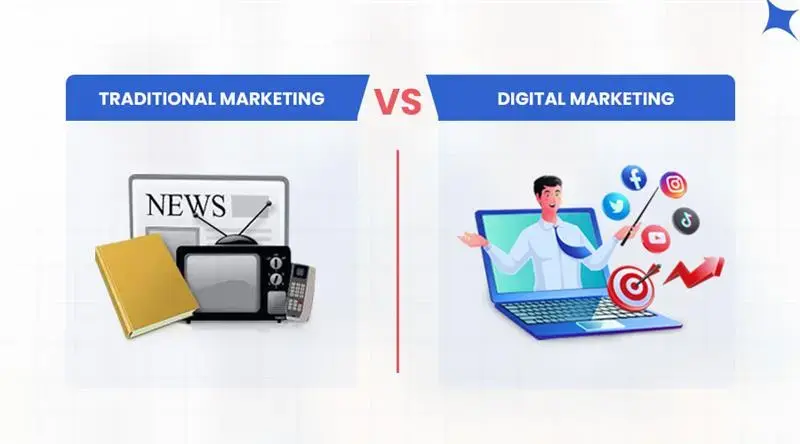People turn to the Internet Wayback Machine because it’s one of the easiest ways to step back in time and view old versions of websites through timeline-based snapshots.
Whether it’s tracking design changes, finding content that’s been deleted, or doing research on competitors, it’s a tool that comes in handy for many businesses.
But here’s the problem: the Wayback Machine isn’t always perfect. It often misses snapshots, loads slowly, and doesn’t always capture the specific pages or details you are searching for. That’s where the need for Wayback Machine alternative tools comes in. These internet archive alternatives offer faster access, more reliable archives, and in some cases, advanced features that give you a clearer view of the past.
In this blog, we will walk you through the 10 best Wayback Machine alternatives so you can always access the old web pages you need without the usual roadblocks.
What Should You Look for in a Good Wayback Machine Alternative?
When you find an alternative to the Internet Archive’s Wayback Machine, you should prioritize some good qualities. These qualities can really fill the gap that Wayback Machine remains in the back seat.
First check how extensive the archive is. Does it capture enough websites and snapshots to give you the history you need?
Next, reflect on the frequency of snapshots. How frequently does it take snapshots of web pages? A similar Wayback Machine to the Internet Archive can give you access to more up-to-date documentation snapshots.
One of the key factors to consider when searching for a Wayback machine alternative is how deeply it archives. For instance, some records are available on the main web pages, while other tools store relevant links, content, and images as well.
Good internet archive alternatives should have a clean interface, fast loading times, and easy search options so you don’t waste time digging. Finally, pay attention to extra features such as advanced filtering, screenshots, or even tools for tracking changes over time.
The right alternative won’t just show you old web pages; it will make browsing history smooth, accurate, and useful.
Best Wayback Machine Alternative to Consider for Viewing Old Websites
Archive. today
Archive. Today is an ideal option for Internet Archive alternatives. It can preserve both its text and images in a lightweight, shareable snapshot.
Let’s understand how it can be a useful alternative to the Wayback Machine. Unlike Wayback, which crawls the web automatically, Archive. today lets you instantly capture a live webpage.
It’s especially useful for journalists, researchers, and anyone looking to store “evidence” of a page before it changes or disappears. They can record the unalterable version of content, interactive elements, or a webpage in the form of a link. The tools also include search queries that you can use to find the saved snapshot of unalterable URLs or Domains.
Stillio
Stillio is more than just an archive tool; it’s a visual website monitoring service designed for marketers and business owners. They can make great use of this snapshot tool, or you may call it a great
Wayback Machine alternative.
Instead of manually saving pages, Stillio automates the process by taking scheduled screenshots of websites, whether daily, weekly, or monthly.
Compared to the Internet archive Wayback Machine, Stillio offers far greater control and customisation. Using Stillio, you document changes on your competitor’s website in PDF format. Thus, you can stay ahead of the curve on the compliance or competitive pages.
Perma.CC
Perma.CC is widely used to spot link rot, which means the problem of broken links in legal or scholarly documents. When you create a Perma.cc link, it stores a stable snapshot of the page, ensuring references remain valid for future readers.
Unlike the Wayback Machine, which may or may not have archived a particular page, Perma.cc gives users direct control to preserve critical sources. It’s not meant to be a broad web archive like the Wayback Machine but rather a powerful tool for researchers, students, and legal professionals who rely on accurate references.
The Time Travel (The Memento Project)
Memento is another reliable alternative to the Wayback Machine. It acts like a time machine for the internet by allowing you to search multiple web archives simultaneously.
Instead of relying on a single archive like Wayback, it aggregates snapshots from different archival sources, giving users broader and more comprehensive results.
This excellent snapshot tool is a great choice for researchers and historians. This similar Wayback Machine is especially useful for someone who wants to compare how a website appeared across different archives over time.
Another important Memento feature includes that you can choose the exact date you want to see for the page you are visiting—no need to jump between tabs or paste URLs into a separate tool. It brings the archive directly to your browsing window for a smoother experience.
Pagefreezer
Pagefreezer is a premium-grade solution designed for businesses, governments, and enterprises that need compliant and secure digital records. It allows real-time and automated archiving of websites, social media content, and even internal communication platforms like Slack.
Its strength lies in legal compliance and eDiscovery — making it a go-to choice for industries that require auditable, tamper-proof records. This tool is an appropriate option for financial companies, government companies, or enterprises that handle highly sensitive data.
Unlike the free and open Wayback Machine, Pagefreezer offers enterprise-level monitoring, encryption, and reporting features that cater to strict regulatory requirements.
WebCite
Being an ideal option for a wayback machine alternative, WebCite is tailored for scholarly work, academic publishing, and professional research. It allows users to archive cited web references so that even if the original page disappears, the reference remains intact and accessible.
This is critical in ensuring academic integrity and avoiding “dead links” in published research. While the Wayback Machine is more general-purpose, WebCite is laser-focused on citation preservation, which makes it an essential tool for scholars, researchers, and students.
Resurrect Pages
Resurrect Pages is a handy browser add-on that helps users quickly access cached or archived versions of websites that are down, unavailable, or deleted. It pulls data not just from the Wayback Machine but also from Google Cache, Coral Cache, and other archival services. This makes it ideal for everyday browsing needs when you want to “resurrect” a page that’s suddenly offline.
Unlike Wayback, which can feel slow and limited, Resurrect Pages acts as an aggregator of multiple sources, giving users more options to retrieve lost content.
Through integration with established archives, including the Wayback Machine and Archive.today, this extension enables immediate access to historical versions of web pages directly within the browser. Though the tool does not preserve new material, it significantly improves accessibility to existing archives, making it valuable for academic research and digital reference work.
Yubnub
Yubnub is a command-line-style web application that integrates with multiple online tools and archives. While not a dedicated archiving service, it provides commands that can instantly fetch archived content or cached data from different sources.
Compared to the Wayback Machine, Yubnub is less about passive browsing history and more about quick, direct access to multiple tools with a single input.
Webrecorder
Webrecorder can archive various elements of websites, including dynamic and multimedia-heavy pages that the Wayback Machine often struggles with. Its web capture can run on JavaScript, allowing users to capture a website exactly as they experience it, including videos, interactive scripts, and even social media feeds.
This makes it ideal for digital preservationists, researchers, and artists who need more than static snapshots. What sets it apart from Wayback is the depth of capture.
GitHub
While GitHub is best known as a platform for version control and software collaboration, it also functions as a unique form of web archiving. Users can create repositories to preserve web pages, codebases, and digital assets, ensuring they remain available over time.
GitHub provides active preservation and collaboration — you can roll back to older versions, fork projects, or document how websites and applications evolve. For tech-focused users, GitHub serves as a living, collaborative alternative to traditional web archives.
Wrapping Up
So, while the Wayback Machine is the go-to for many, it’s not the only player in the game. You have got tools that make snapshots easier to grab right from your browser, options that can save full interactive layouts, and even platforms like GitHub where communities work together to keep content alive.
The real question is—what do you need? If it’s quick access, advanced functionality, or complete control, there’s an option out there for you.
Try a few options, see what fits best, and ensure the content you care about remains accessible over time.
If you need expert help, don’t worry, we are here to help. Get in touch today to book a free 30-minute consultation call with our team.
Frequently Asked Questions
Can I use these tools to archive pages that are behind paywalls?
Generally, no. Most archiving tools cannot access content hidden behind paywalls or login screens unless you already have access.
Are these archived pages secured?
Yes, archived pages are usually stored safely, but the level of security depends on the platform. Tools like Pagefreezer even offer private or encrypted archiving for sensitive data.
Which internet archive alternatives are best for legal and compliance?
Page freezer and stillion are the two best internet archive alternatives for legal and compliance.
Can I retrieve deleted pages with these Wayback Machine alternatives?
Sometimes. If a page was archived before it was deleted, you can retrieve it. But if it was never captured, you won’t be able to recover it.
How to choose the right Wayback Machine Alternative?
To choose the right Way Back machine alternative, reflect on your needs and purpose, and align them with the tool’s features, including frequency updates, security, ease of access, and customizability.


































































